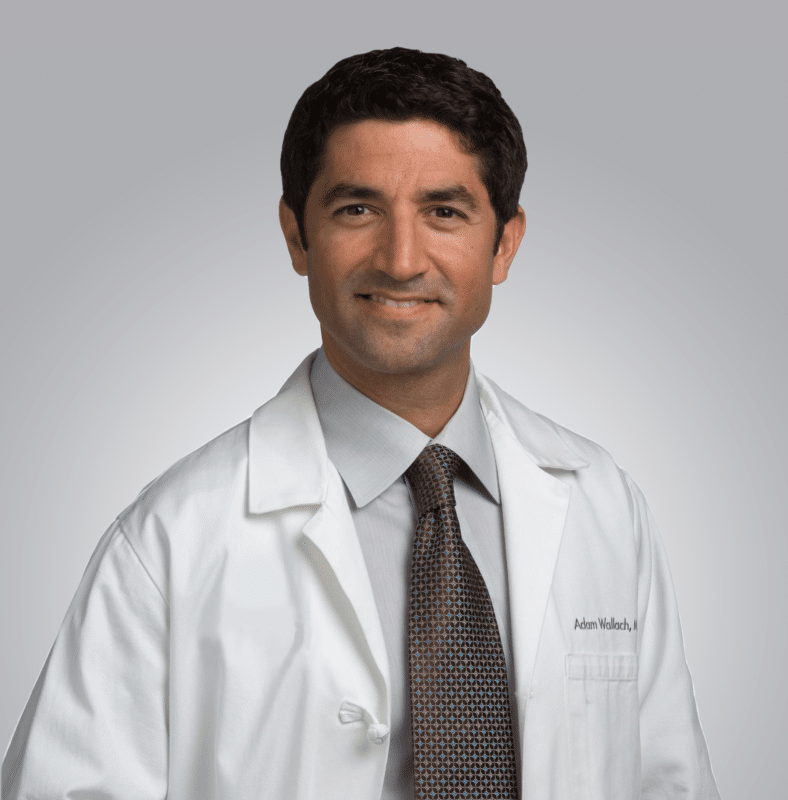Ask the Doctor: To Questions on Skin Cancer Awareness with Adam Wallach, M.D.
May is Skin Cancer Awareness Month. It serves as an occasion to raise awareness on the most prevalent cancer in the United States as more than five million skin cancer cases are identified every year. The Skin Cancer & Dermatology Institute values knowledge as a source of empowerment when it comes to skin health. Dr. Adam Wallach, board-certified dermatologist at Skin Cancer & Dermatology Institute’s Truckee location, shares insights on skin cancer, how to help prevent it, and tips for self-exams.

Wallach-e1612221758318-788×800-1
Q: How can I tell if my cancer is melanoma?
By using the ABCDEs for detecting melanoma:
A – Asymmetry: One half is unlike the other half.
B – Border: An irregular, scalloped, or poorly defined border.
C – Color: Is varied from one area to another; has shades of tan, brown or black; is sometimes white, red, or blue.
D – Diameter: While melanomas are usually greater than 6mm (the size of a pencil eraser), they can be smaller.
E – Evolving: A mole or skin lesion that looks different from the rest, or is changing in size, shape, or color. A mole that is suddenly itchy, inflamed, bleeding, or scabby should also be examined.
The ABCDE rule does not apply to all melanomas. During your monthly self-exams, screen for the following lesions:
Elevated: Look for a new spot that is raised above the skin’s surface.
Firm: Look for spots that are firm to the touch, not flabby.
Growing: Look for spots that are fast-growing or continue to grow for more than two to three weeks.
“Ugly Duckling Rule”: Most people’s moles tend to look alike. If there is a mole that doesn’t match the others (i.e., the ugly duckling), that mole should be examined.
Q: What are the signs of skin cancer?
Individuals 40 years and older should look for changes when performing a self-examination. Specifically, when examining spots, pay attention to new growths, changes in shape, or anything that appears different from your typical spots. Essentially, keep an eye out for the mole that stands out from the rest of your moles. It is also important to note that cancers may sometimes bleed, and a mole that is turning cancerous may itch periodically.
Q: How should I perform my self-exam?
Regular self-exams are critical to becoming familiar with your spots. Ensure you check your entire body at least once every month. Here are some helpful tips for checking your skin:
- Set a monthly reminder on your calendar.
- Use a handheld mirror to check difficult-to-see areas, like your neck and back.
- Ask family members to help monitor changes.
- Take photos to track any possible changes.
- Schedule an appointment with your dermatology provider if you notice any changes.
Q: Why is it important to raise awareness about skin cancer?
According to the American Academy of Dermatology (AAD), melanoma can affect 1 in 27 men and 1 in 40 women during their lifetime, making it a significant issue in the United States. Skin cancer does not discriminate based on skin color and can impact anyone. However, it is primarily a preventable disease as 90% of nonmelanoma skin cancer and 85% of melanoma skin cancer are caused by UV radiation from the sun and tanning beds.
Raising awareness about skin cancer is crucial in reducing the number of people affected by it. Therefore, the entire month of May is dedicated to this goal. As a dermatologist, I frequently remind everyone to schedule their annual full skin exams during this month.
Q: How does sun exposure contribute to sunspots, loss of elasticity, and wrinkles?
The aging process can be categorized into two types – intrinsic and extrinsic factors. Intrinsic aging is the natural aging that would happen even in the absence of external factors and is primarily determined by genetics. Even if one is not exposed to the sun, one would still experience aging, including the loss of collagen and elastin, which can lead to the development of wrinkles.
However, extrinsic factors such as sun exposure significantly add to the aging process. Sun exposure can accelerate the breakdown of collagen and elastin, resulting in wrinkles. Additionally, it can cause the appearance of sunspots and dilated blood vessels. Therefore, sun protection is crucial to prevent extrinsic aging and maintain healthy and youthful-looking skin.
Q: What are some little-known facts about skin cancer?
Skin cancer is one of the most prevalent skin cancers in the United States. Skin Cancer Awareness Month is a powerful tool to educate people on this important issue. Did you know that 1 in 5 Americans will develop skin cancer by the time they turn 70? This is a significant statistic. Moreover, we are seeing a growing number of younger patients being diagnosed with skin cancer compared to 20 years ago. It used to be more common in individuals aged 50 and over, but now we are seeing it in people as young as their 20s, 30s, and 40s.
Many individuals are unaware that daily sun exposure can be just as harmful as spending a day at the lake without sunscreen. While people tend to apply sunscreen on big sun days, they tend to forget about everyday exposure. It is important to incorporate sunscreen into our daily routines and to reapply throughout the day.
Skin cancer is not only the most common cancer in America, but it is also one of the most preventable forms of cancer. Skin Cancer & Dermatology Institute encourages our community to come together and raise awareness about skin cancer prevention, not just during this month but throughout the year.
Get to know Skin Cancer & Dermatology Institute, and learn more about medical dermatology, Mohs surgery, and cosmetic surgery at SkinCancerDerm.com. Appointments may be made online.
About the Dermatology Provider
In private practice since 1997, Dr. Wallach treats patients at Skin Cancer & Dermatology Institute’s Truckee location. He diagnoses a full range of dermatologic problems for both adults and children, specializing in medical and cosmetic dermatology, including the use of various lasers over the last 25 years. He is a strong proponent of patient education in his practice and most recently is a contributing author to the chapter on the skin in the new highly reviewed book, The 21st Century Man. Dr. Wallach and his family live in the North Tahoe area. Get to know Dr. Wallach and book an appointment online today.
Support Local Journalism


Support Local Journalism
Readers around Lake Tahoe, Truckee, and beyond make the Sierra Sun's work possible. Your financial contribution supports our efforts to deliver quality, locally relevant journalism.
Now more than ever, your support is critical to help us keep our community informed about the evolving coronavirus pandemic and the impact it is having locally. Every contribution, however large or small, will make a difference.
Your donation will help us continue to cover COVID-19 and our other vital local news.




